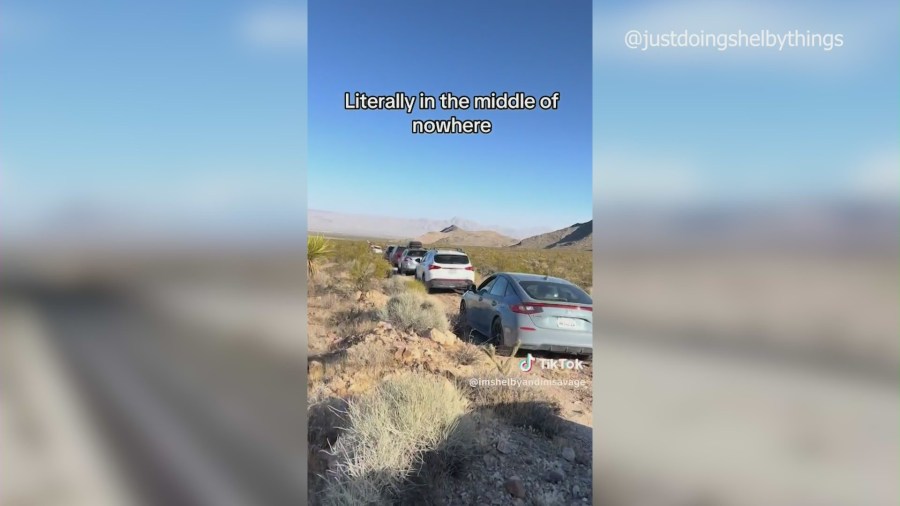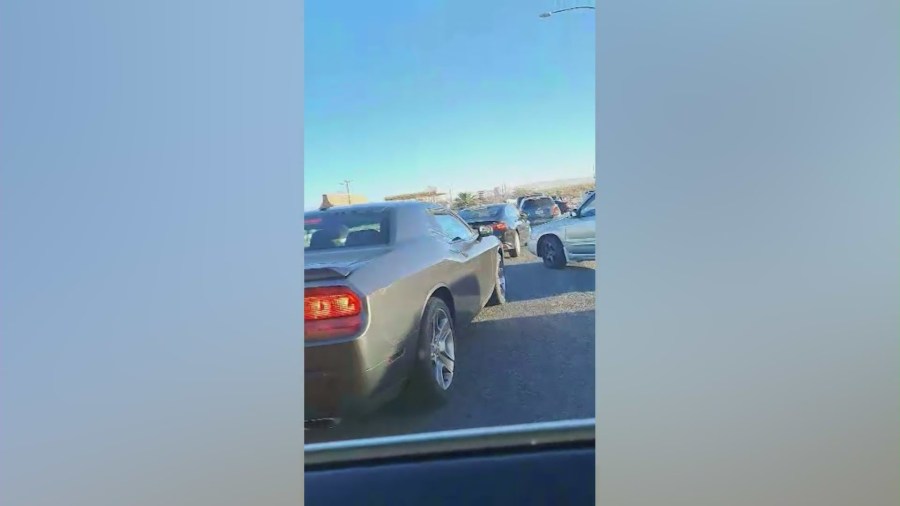Google has issued an apology after sending some drivers using Google Maps to travel between Los Angeles and Las Vegas on dangerous desert road detours, at least one of which turned out to be a road to nowhere that left people stranded.
The I-15 corridor between Southern California and Vegas is a popular one, especially during the Thanksgiving holidays, which is why Shelby Easler and her family took that route to watch the Las Vegas Grand Prix on Saturday, Nov. 18.
Everything went great, according to Easler, until they used a Google Maps detour on their way back to L.A. to avoid a dust storm that shut down portions of the 15 Freeway on Sunday, Nov. 19.
“We thought it would be safer to avoid the dust storm,” she told KTLA’s Shelby Nelson. “So, it was like a dust storm warning on this side, then an alternative route that would save you 50 minutes.”
Skipping a high wind event in the Mojave Desert seemed like a good idea, so Easler’s brother opted for the app’s alternate route, which took them on a path in the remote Nevada desert.
“We were on actual roads, driving through the mountains for at least a solid two hours,” Easler said.
They eventually ended up near Kingston Peak, on an unpaved dirt path and they weren’t alone. Hundreds of other people appear to have taken the same route.
In a viral video Easler posted to TikTok, a long line of cars can be seen on the unexpected and unwelcome off-road adventure.

That same day, Gillian and David Strull, who were traveling in the opposite direction to catch a show in Las Vegas, said they were getting desperate because they were running late. As their estimated time of arrival continued climbing on his Google Maps app, David asked his wife to plug their destination into her Google Maps.
“Her Google Maps told us to get off at Cima Road and take some other back country road,” David told KTLA. “I thought that was odd, that we were both running Google Maps, but hers is telling us to take a completely different route.”
They were directed into a different line of cars off the 15 Freeway before realizing that staying on the familiar highway was probably the safer choice.
“I just kind of figured that if we’re going to be stuck in traffic, one way or the other, I just want to be on the road that I know where it ends up,” he added.

The dangerous detours caused gridlock on some roads and stranded several drivers, including Easler and her family, who were stuck on the desert road for five hours before eventually getting their car towed because of the damage caused by the rough terrain.
“Our back right tire was coming off,” Easler said.
She said that the experience has served as something of a lesson for future trips.
“If doing a road trip, it’s important to actually have a real map in your car with you in case something happens,” she explained.
Gillian Strull said they also learned a lesson.
“I would say if you don’t know the area, then maybe stick to what you know,” she said.
Officials at the California Highway Patrol told KTLA that these kinds of detours are actually pretty common in that area, with GPS apps sending people onto remote desert roads. CHP said they advise sticking to the primary, familiar routes.
In a statement, a spokesperson at Google said:
“We apologize for the incident that happened last weekend and can confirm that we’ll no longer route drivers traveling between Las Vegas and Barstow down through those roads. Today, drivers making that trip are being routed through I-15, which has been reopened.”





















